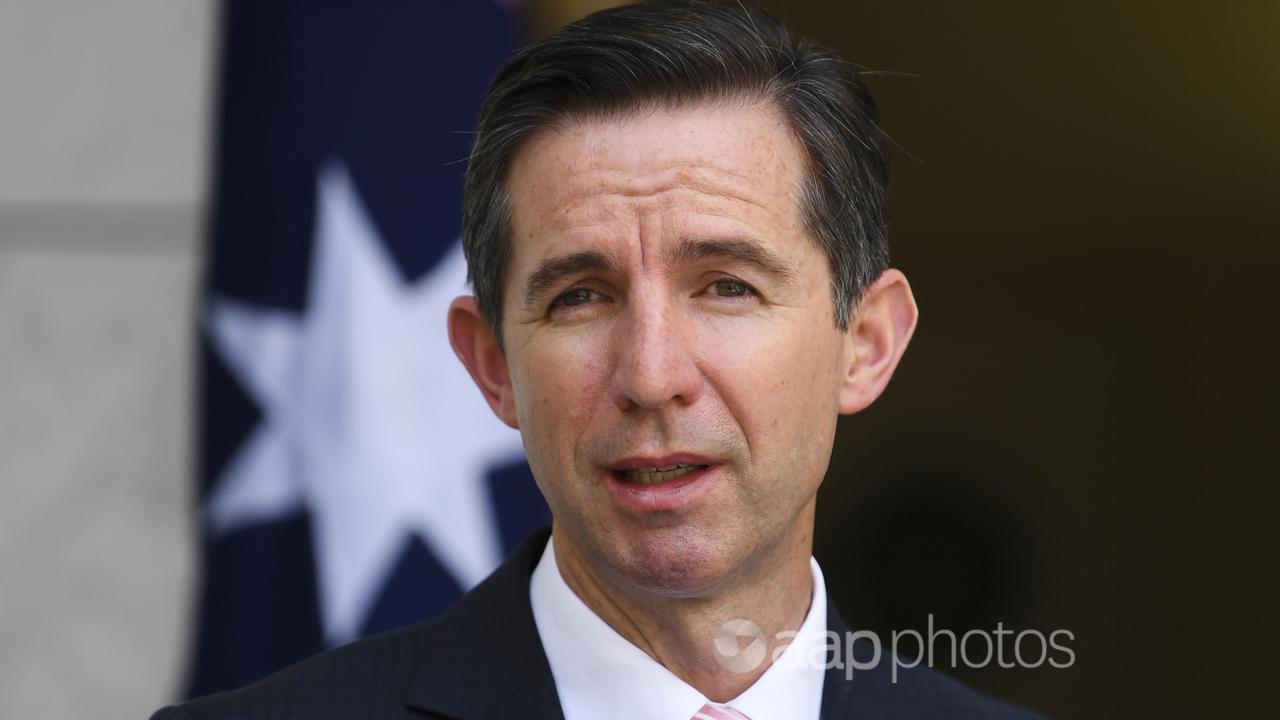Finance Minister Simon Birmingham has sought to turn the opposition’s record on the economy against it, suggesting that real wages did not grow under the previous Labor government.
However, the claim is wrong. Real wages grew at an average annualised rate of around 0.8 per cent per year during the term of the Labor government of 2007-2013, according to AAP FactCheck calculations.
During an interview on Network Ten’s Studio 10 program on December 17, Senator Birmingham said: “If we look at what’s projected over the next few years, we do see a return to wages growth through the life of our government. We’ve managed to achieve real wages growth, the previous government hadn’t.” (video mark 11min). His comment was subsequently reported by other media.
Senator Birmingham’s office told AAP FactCheck in an email the minister was referring to “the fact real wages were falling as we came into government back in 2013”.
Real wage growth measures the increase in wages relative to the increase in prices. If wages grow at a slower rate than inflation, real wages growth is negative – reducing people’s nominal purchasing power, or their ability to afford goods and services.
Real wages can be calculated (see pg 7) by subtracting the change in the Consumer Price Index (CPI) from the change in the Wage Price Index (WPI) over the same period.
Using Australian Bureau of Statistics (ABS) CPI and WPI data, AAP FactCheck calculated the growth in real wages from the December quarter of 2007 – which covers the period including the November 2007 federal election – to the September quarter of 2021, the most recent data available at the time of writing.
For both CPI and WPI, AAP FactCheck used figures measuring the percentage change since the corresponding quarter in the previous year. Seasonally adjusted figures were used in both cases.
This calculation method was verified by associate professor Dipa Sarkar from QUT’s School of Economics and Finance, who said comparing seasonally adjusted quarters was a fair way to assess the figures.
Professor Guyonne Kalb, senior research manager of the Labour Markets and Employment Program in the Melbourne Institute of Applied Economic and Social Research at the University of Melbourne, told AAP FactCheck in an email that there are several ways trends in real wages could be calculated but they should lead to similar conclusions.
What does the data show?
Using the methodology outlined above, AAP FactCheck’s analysis shows annual real wages grew or remained the same in 20 of the 24 quarters that cover the period from the late November 2007 election to the early September 2013 poll.
The average annual growth rate in real wages across all 24 quarters covering the term of the Labor government equates to around 0.83 per cent.
In comparison, real wages grew at an average annual rate of 0.35 per cent during the eight-year period of coalition government to September 2021. Excluding the period after March 2020, during which COVID-19-related effects led to significant volatility in the CPI figures, real wages grew at an average annual rate of 0.39 per cent.
A 2019 parliamentary library research paper also found growth in real wages was stronger prior to the 2013 election.
The average annual growth rate in real wages was 1.8 per cent in the five years to November 2013, the research paper said, compared to 0.5 per cent per year in the five years following November 2013. Its calculations were based on ABS average weekly earnings data rather than the WPI, which is unaffected by compositional shifts in the labour force such as hours worked.
While all the data shows real wages rose during Labor's time in office between November 2007 and September 2013, determining whether they were rising or falling at any point in time depends on the period being assessed.
For example, comparing quarterly changes provides a short-term indication of shifts in real wages but may not be representative of a longer-term trend. In the September quarter of 2013, during which the election was held, real wages fell 0.4 per cent compared to the previous quarter after increasing 0.1 per cent in the June quarter. They fell a further 0.2 per cent in the December quarter.
Senator Birmingham's subsequent claim that real wages were falling when the coalition came to power is, therefore, correct when looking at the three-month period including polling day on September 7. However, this ignores the longer-term trend of real wage growth in the period prior to the election.
Prof Kalb said, based on AAP FactCheck's figures, it was "definitely incorrect" to claim there was no growth in real wages under the previous Labor government and "misleading" to say real wages were going down when the coalition took power.
The Verdict
Finance Minister Simon Birmingham's claim that real wages did not grow under the previous Labor government is incorrect. While real wages dipped in the quarter that included the 2013 election, the longer-term trend in real wages was upward. AAP FactCheck's calculations show real wages grew at an average rate of around 0.8 per cent per year during Labor's time in power, a significantly higher rate of growth than under the subsequent coalition government.
False - The claim is inaccurate
* AAP FactCheck is an accredited member of the International Fact-Checking Network. To keep up with our latest fact checks, follow us on Facebook, Twitter and Instagram.
All information, text and images included on the AAP Websites is for personal use only and may not be re-written, copied, re-sold or re-distributed, framed, linked, shared onto social media or otherwise used whether for compensation of any kind or not, unless you have the prior written permission of AAP. For more information, please refer to our standard terms and conditions.


















